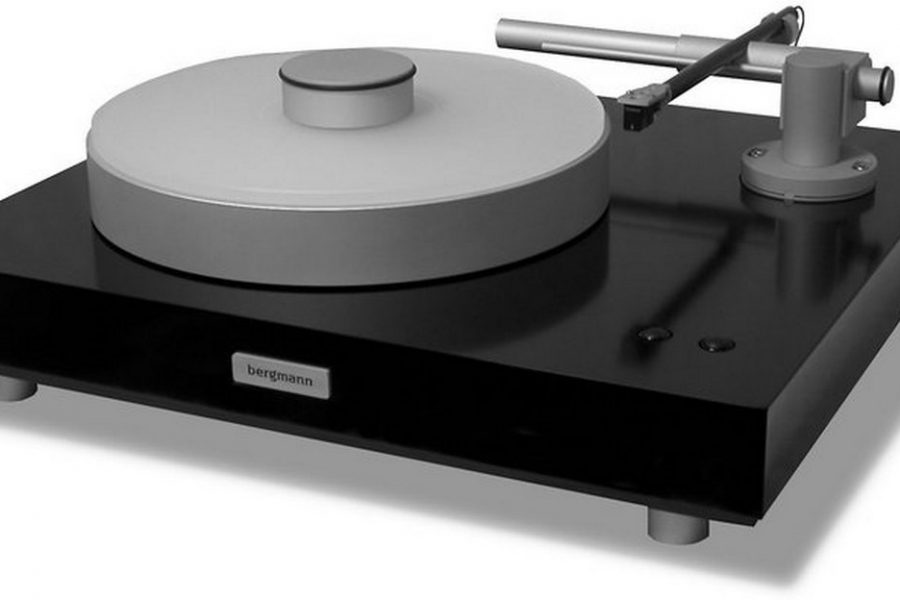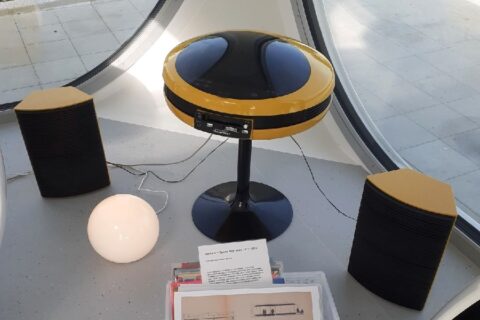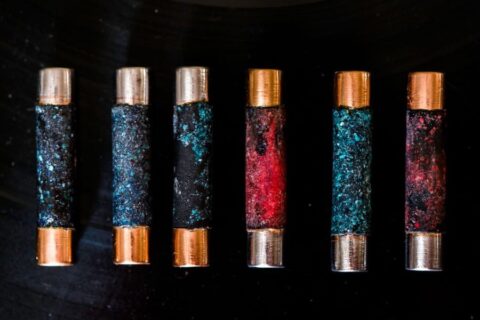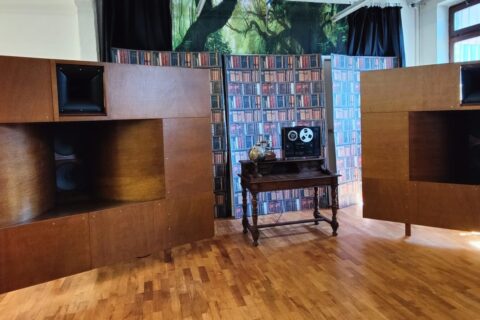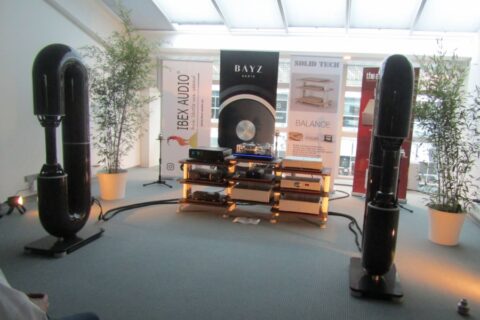Air is a wonderful thing. Not because living beings and plants do not get along without it, as do not windmills, forest fires, and submarines. Air is a wonderful thing because when you squeeze it a little bit, it – the compressed air – can be used as the workhorse for many marvelous things: drilling, nailing, grinding, sawing, fixing nuts, twisting, painting, as springs, brakes, pumps, … and for bearing a turntable.
This wonderful feature of air, and air’s many other opportunities, in addition to high availability and great storability have not gone unnoticed by audio manufacturers. Pressurized air was once used in gramophones. Today, pressurized air is used for cleaning up audio gear and equipment racks, and above all, for the bearings of a turntable.
And why not. If Peugeot makes a car running an hour with compressed air without any extra help, why would air not be able to support a platter of a turntable, not to mention the tonearm system. At least Johnnie Bergmann from the Danish Bergmann Audio believes in air in his airbearing turntables.
In nine cases out of ten a turntable trusts on ball bearing or bearings on top of which the weight of the platter rests. Implementing the bearing suspension, the right material of bearing and the bearing housing, the type and quality of the oil to be used, and so on, are some of the eternity topics of vinyl reproduction.
Almost equally old is the dream to get rid of the mechanical contact completely. This is like the Lumiere brothers’ dream of raising a human being on wings. For even if the atomic structure of the ball bearing’s surface would be immensely smooth and the oil of best imaginable quality, friction (resistance to movement) always causes some noise, and interference, and instability. Doing away with the mechanical contact also protects the platter from vibrations coming from inside and outside the system.
The French J. P. Verdier makes, in his less expensive turntable, the 16kg platter rotate on an oil column, and levitate with the help of strong magnets in his more expensive turntable. Verdier’s ideas from the 1980s have been mimicked by many other turntable manufacturers and for example magnet levitation has been utilized in several modern turntables.
Another elegant way to get rid of the mechanical contact is put the platter float on a column of air. The idea is not new. Since the 1970s, it is been tried by Infinity, Forsell, Tritium, Walker, and many others.
Despite this, air suspension has been in the margin, above all, due to difficult and expensive implementation and impracticality: enthusiasm may die out if the air pump is so loud that it will need to be hidden in another room than the record player.
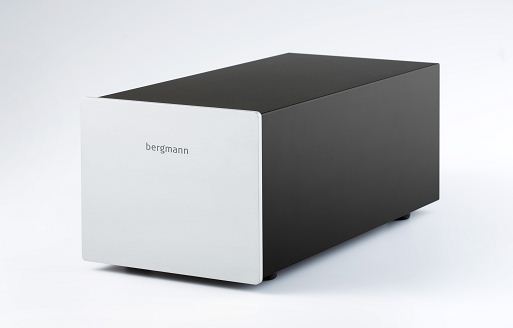
Air on the move
In Bergmann Magne, the air is passed in between two aluminium discs, from which it is discharged onto the deck from a small hole lifting the platter up from its bearing house.
Now, I guess this kind of a structure is not entirely free from friction either because air too causes resistance to movement. When Magne is switched off, the platter will go on rotating, but the movement shuts down faster than in many traditional turntable with ball bearings.
Although the entire mass of the rotating platter floats on a column of air, there’s also a traditional bearing suspension (as in almost all similar solutions). However, there’s no bearing ball in the “bearing house” (made of vibration killing polymer), but just a splash of oil. When the air pump is switched off, the shaft descends to this oil bed. The shaft and the channel are of course necessary for centralizing the platter correctly.
According Johnnie Bergmann, the air supply is a very critical factor in any airbearing turntable system. The air flow needs to be smooth, the air itself clean and dry. In the Magne constant air flow from the pump to the turntable is achieved by encapsulating the pump’s air impulses. The pump also features a replacable dust filter as well as a condensation tank.
The 5,5 kg platter is made of aluminum with a polycarbonate top plate. The 1,5kg sub-platter rotates the main platter through a belt and driven by a DC motor. The only visible thing of the motor is the shaft pin. The motor is hooked to a small external power supply. The metal clamp has rubber rings for a better touch and less vibration. The rubber ring on the bottom of the clamp prevents the LP from slipping on the platter.
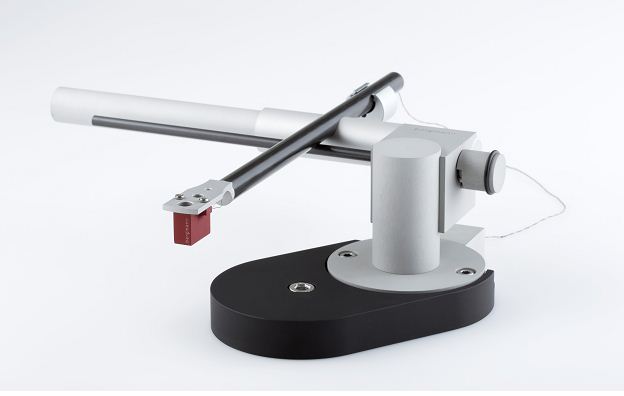
The floating linear arm
The Magne comes with a linear/tangential tone arm moving on top of an air column. This structure is applied in order to let the tonearm be in contact with the LP only via the catridge stylus and tonearm wires.
Air suspension of the tonearm is an old idea, and just as often the tonearm chosen for the techniques is a linear arm (the arm seeks to maintain the 90 degree angle of the cartridge). Air suspension is not a necessary condition for a linear tonearm. Tangentiality may be implemented, for example, with two tonearm tactics (such as the Garrard Zero 100), or so that the whole arm moves by means of a servo-controlled motor (eg. Goldmund, B&O, and some Japanese players).
The current linear arms were born in Japan in the 1970s. In these a low mass tonearm is attached to a suspension carriage that glides smoothly on, for example, glass rods as in some Clearaudio turntables. Air-bearing linear arms have been used by Eminent, Air Tangent, Forsell, Kuzma, Simon Yorke and dozens of others.
The Magne tonearm is a type of combination of a recorder and a hovercraft. Air is being discharged through small holes in the pipe rail pressurizing the space between the rail and the sleeve causing the sleeve and the tonearm attached to it float on a cushion of air.
In such a non-closed structure the air pressure doesn’t rise particularly high. It will have a number of advantages, but also the risk that the arm pivots around its vertical axis, not necessarily retaining full tangentiality of the stylus in the groove.
The sleeve attached to the tonearm tube arm is carbon fiber and damped inside. The effective mass is 11g. The figure apparently refers to effective vertical mass. In this kind of arms some problems may occur because of the uneven distribution of the effective mass in the horizontal and vertical plane.
The counterweight system is isolated from the arm. The thin Litz copper cables have been exported to the tonearm in a way that is unlikely to harm the tonearm’s ideal flow. The main body of the tonearm system is made of a hard aluminum alloy, as is the cartridge headshell. The carriage is completely parallel to the sliding tube, so that azimuth adjustment should always be in place, provided that the cartridge is straight. Other settings include the VTA, overhang and horizontal parallelism. The mass of the tonearm piece is 5.4 kg including the base.
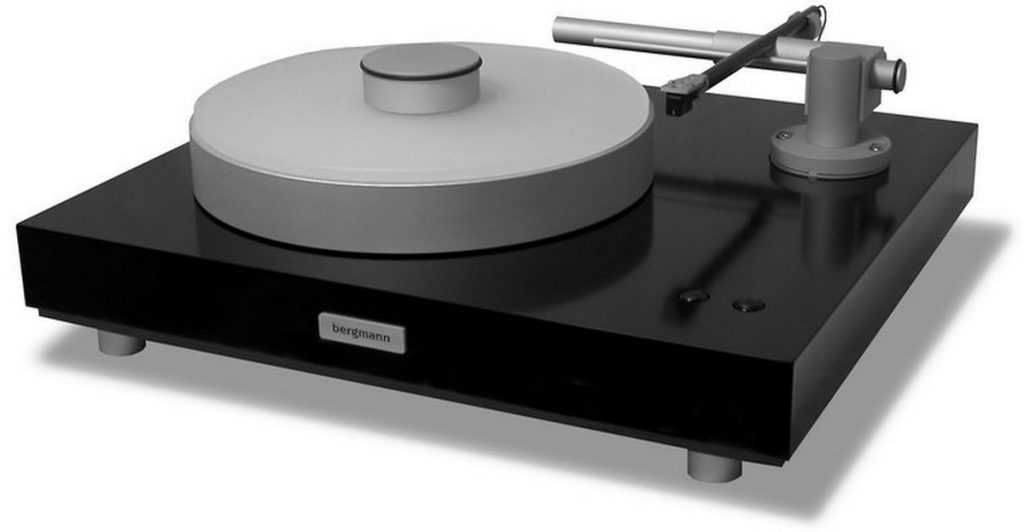
An elegant non-imposing chassis
44cm deep, 49.5 cm wide and 16.5 cm chassis is made of hard fiber board. Below are three circular feet. Feet are particularly important in such a player, because the air suspension systems requires that the player is horizontally 180 degrees.
Taking into account how shiny and transparent and sculptural and attention-seeking turntables currently are available on the market, Magne’s external habitus is quite elegant. The turntable looks simple and beautiful. Its dimensions are sufficiently large so that it will be taken seriously, but it doesn’t try to impose itself on any level.
Assembling Magne is not at all difficult and time consuming but, as always, one must be careful and precise and do things in the right order. If the cartridge is already there and adjusted, no special adjustment is required.
Playing LPs is really tremendously easy. First the air pump on, then the 33.3/45 button, the tonearm down on the LP. Moving the tonearm on the rail tube requires some attempts to get used to it, but that’s it. It takes a few seconds for the platter to reach the steady speed of rotation. When the LP is brushed, the turntable is ready to play.
It would be wrong to say that Magne is dead silent. It is not. The pump vibrates slightly at a very low frequency and some of it can be heard from a very short distance (50cm). But not from the listening seat. There’s absolutely no reason why the pump could not be placed next to the turntable.
The pump makes less noise than the air bearing systems: the noise of the air flowing through the holes can be heard every time the LP is changed. To hear the noise from the listening position would require sensitive ears, and low background noise level. While listening to music the sound of the blow is impossible to hear.
What depends on what
The dealer had installed 500 euro Ortofon MC Rondo Red pickup. Rondo Red is not a trivial cartridge in any way, but perhaps short of the level what the likely owner of the Magne would invest in the cart.
The problem is not the price of the cartridge, but how to distinguish the impact of the cartridge from the contribution of the turntable & tonearm combo. For example, I’d not like to comment on Magne’s sound regarding “resolution” or transparency (concreteness), as in my experience, these features largely depend on the cartridge too.
The same goes for the tone of the treble, which depends on the trackability of the cartridge at high frequencies. And the quality of the bass too follows the qualities of the cartridge to a certain extent. Even if the resolution or the quality of the bass depended on the quality of tonearm, as is sometimes claimed, the verification (ie. arm replacement) eg. in the Magne’s case would have been completely impractical.
Having said that, to test the sole effect of the tonearm would have been interesting, especially against the reputation of linear arms of being bass light. Now I can only say that I did not feel that something would have been missing from the Magne’s bass. It wasn’t bass light, nor bass heavy. And that is as it should be.
With the Ortofon Rondo Red the Magne sounded impartial and colorless, all-inclusively from top to bottom. The sound was so “naturel” that I might have considered adding a touch of positive “tonal character” to it. Again, this is something I felt could have been realized by having another cartridge.
Replacing the cartridge does not take care of intonation, the right pitch and maintaining the right pitch, if there are problems in this regard. Intonation is very much affected by the turntable itself, and in this respect Bergmann Magne managed very well. I didn’t register any wobble around the pitch even with warble-allergic piano, guitar etc. LPs. Also, Magne’s tonearm tube is not so short that fluctuations of VTA-angle would cause problems with uneven records.
So Bergmann Magne passed the most important test for the turntable: the stability of the sound. This was obvious to me. Listening to music for longer periods of time made me consider, however, the possibility that two turntables with a stable sound could perform and present stability in a slightly different way, ie. be temporally precise in a different way.
A belt-driven turntable with a minimal friction like the Magne is a kind of the opposite to turntables with a large moment of inertia (heavy platter) and high torque (pulling power), in which smooth suspension (bearing) is not the main issue, but efficient power transmission. After all, there are those turntable experts who believe that it’s only beneficial to the vinyl sound that the platter/motor will have to work against some resistance.
All other things being the same, could this difference in turntables be heard as a difference for example in the attacks, in the decay, in the transients, in the punchyness, in the weight, in the substance, in the readability of the sound?
These properties are difficult to assess objectively, but intuitively I ended up thinking that Magne might be a master of micro-level fluctuations, dynamic and the other, but that on a macro level for example idler-driven turntables might have an edge. Music flows and runs effortlessly and purely with the Magne but it’s not equally forward-pushing as idler-driven turntables.
That brings us to the classic question whether linear tonearms (airbearing or not) are inherently better with classical music or art music in general whereas pivoted arms win with bass-based rhythm music? I did listen to a lot of rhythm music with the Magne, and did not observe such a straight division, but if the comparison would be taken to extremes, perhaps something like this could be true. I don’t know, maybe not.
The manufacturer calls Magne a high-end entry-level turntable. This is an obvious understatement. A turntable with an airbearing platter and tonearm is not a beginner’s player by any means. It’s an entry-level turntable just because Johnnie Bergman has two more expensive turntables, Sindre and Slepiner, to offer. Modest but prestige looking Magne has the advantages of easy installation and adjustment, ease of use and given the operating principle, silence of the performance.
There’s absolutely no question that with a high-quality cartridge Magne is capable of providing a very high-class sound, above which level the marginal utility of the price drops drastically.
Bergmann Audio Magne turntable, 8700 euro


